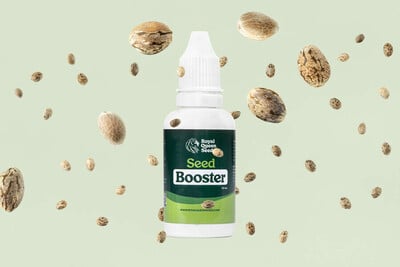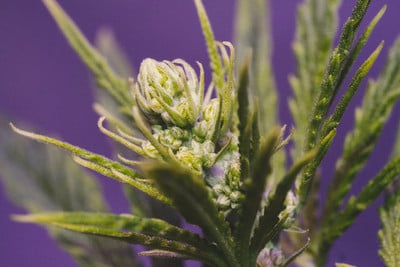.

What to Do With Cannabis Bag Seeds?
So, you just spotted some seeds at the bottom of your freshly purchased weed baggie… Congratulations—you just found some bag seeds. Keep reading to find out whether it's worth the time and effort to grow them, and what to expect if you do.
Contents:
While cannabis legalization is slowly spreading, most parts of the world still criminalise the cultivation, possession, use, and sale of weed. That means most smokers are buying their bud on the black market, rather than at a dispensary, and therefore are no strangers to finding a few seeds at the bottom of their baggie.
Bag seeds (i.e. stray seeds found in a bag of weed) strike joy in some inexperienced growers; after all, these are free seeds you can use to grow the same great weed you’re smoking right now, right? Well, not exactly. Growing bag seeds is a lottery of sorts, and might not be for everyone. Below we'll walk you through the pros and cons of growing bag seeds, and what to expect if you decide to do so.
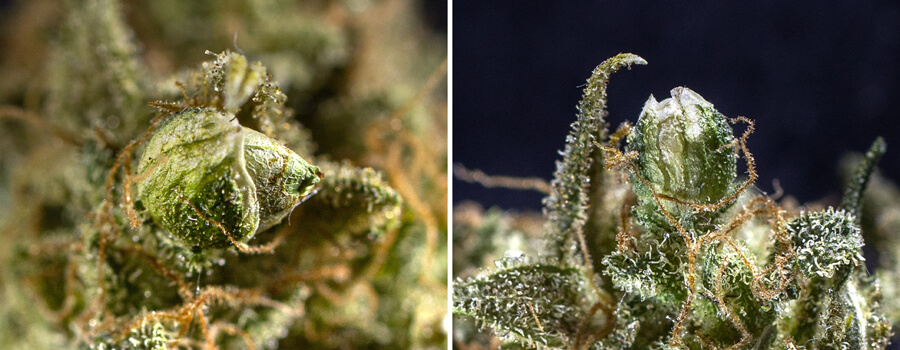
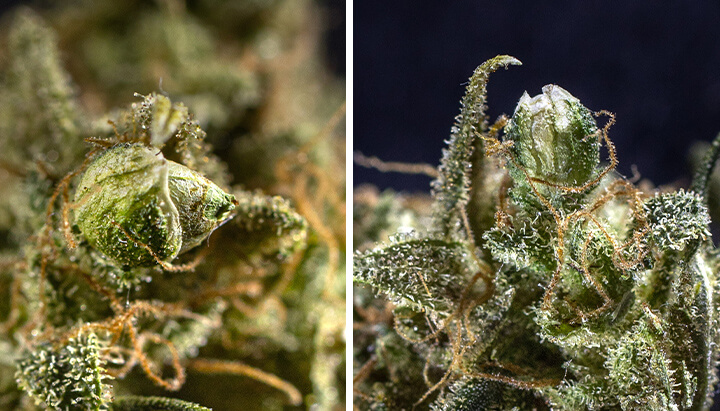
Cannabis Genetics 101: Moms, Dads, Genotypes, and Phenotypes
To properly weigh up the pros and cons of growing bag seeds, it helps to understand cannabis genetics and the breeding work that goes into the creation of modern strains—all without getting too technical, of course.
In ideal natural conditions, cannabis plants reproduce when a male plant pollinates a female. However, in some cases, females can also self-pollinate—they do this by developing pollen-producing sacs, or stamen, in addition to their regular pistillate buds. Self-pollination usually occurs in response to stress, as a plant's final attempt to ensure the survival of their species. This phenomenon is known as hermaphroditism and is fairly common in cannabis.
When a male plant pollinates a female, the resulting seeds contain a mix of genetic information from both parent plants. This genetic blueprint is known as a genotype. The way a cannabis plant expresses that genetic information is known as a phenotype and can vary greatly from one seed to another (in much the same way that you might look very different to your siblings). Seeds descending from a female that has self-pollinated, on the other hand, only preserve genetic information from the hermaphroditic plant that produced them, and typically have a high probability of also sprouting into hermaphroditic plants.
The Complexities of Breeding Great Weed
So, all it takes to create a cannabis strain is a flowering female and some pollen, right? Unfortunately, no—otherwise, every grower on Earth would have their own seed bank. Cannabis breeders take great care when creating their strains and use special techniques like inbreeding, backcrossing, selfing, and more to hone in on particular traits related to a plant's morphology, bud structure, flowering time, aroma, cannabinoid content, and more.
In lay terms, the aforementioned techniques allow breeders to file down the genetic information produced by a particular cross, thereby creating seeds that consistently produce phenotypes with the same characteristics. This is super important, as it allows growers to cultivate plants with stable traits that consistently produce great harvests.
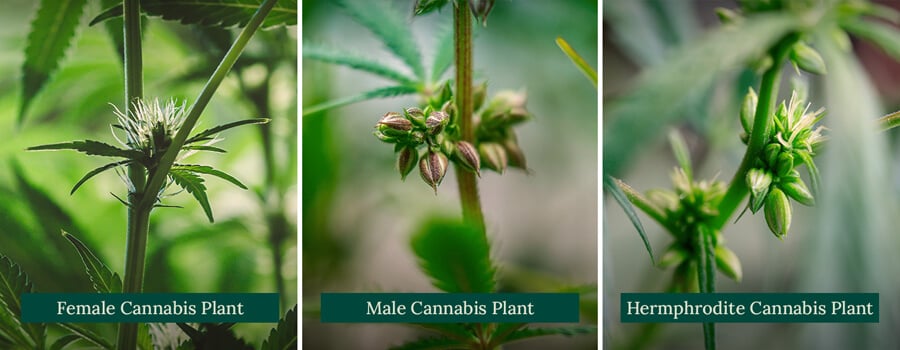
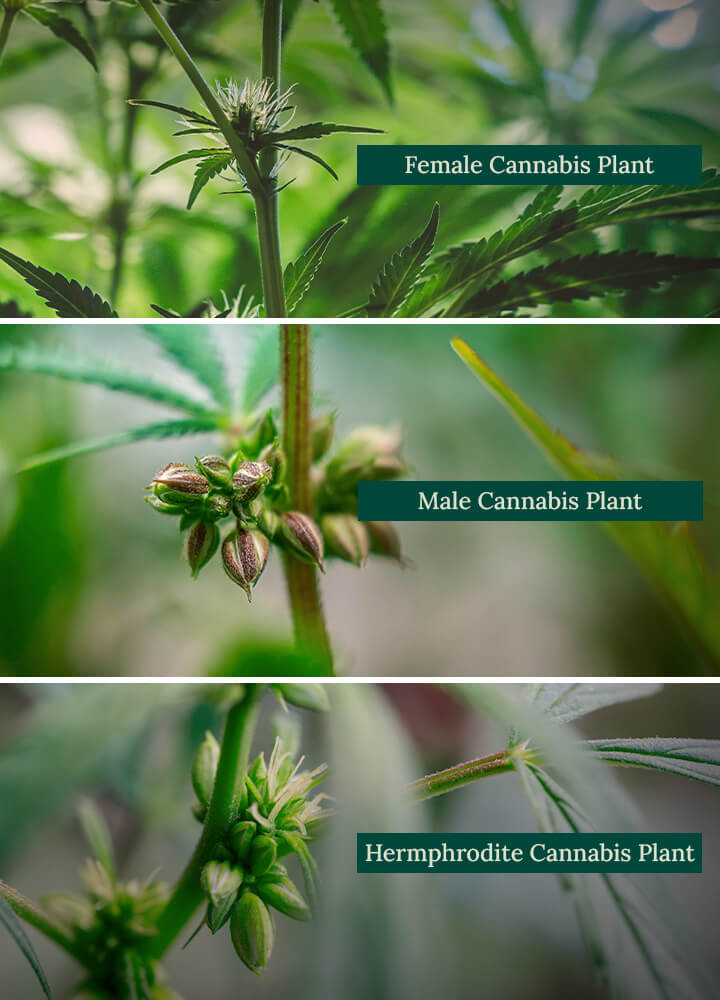
Bag Seeds — A Genetic Lottery
Today, most cannabis growers opt to grow sinsemilla—that is, seedless weed. That's because unpollinated female plants produce larger, denser, and more resinous flowers that make for a potent, aromatic, and flavourful smoke. Pollinated plants, on the other hand, produce buds that are riddled with seeds and of inferior quality. Hence, if you've found seeds in your weed, chances are that whoever grew it didn't intend for them to be there.
So, if you pop and grow bag seeds, what can you expect? Little more than a genetic lottery.
Bag seeds contain genetics from whatever parent plants produced them, and will likely express those traits with a high degree of variation. That's because the strain hasn't been subject to all of the processes that breeders use to define and stabilise certain traits. Hence, if you find multiple seeds in a bag, you might end up with one tall and lanky, slow-flowering phenotype growing next to a stocky, brawny, and fast-flowering one—even if the seeds came from the same cross.
When growing bag seeds, you can expect to find:
- A mix of male and female plants
- If the seeds you found were created from a cross of male and female plants, the seeds they produced will contain both male and female genetics. In this case, you'll be faced with a high probability of growing at least some male plants, and will need to take care to spot, separate, or cull them as soon as possible.
- Hermaphroditic females
- If your bag seeds stem from a female that has self-pollinated (in response to stress, for example), you may end up with plants with a high tendency to produce both male and female flowers. Hermaphroditism is passed down from one generation to another and is a real pain for growers, as a single hermie can produce hundreds of seeds and ruin entire harvests if not caught early.
- Random traits
- When growing bag seeds, you won’t have access to any information regarding flowering time, plant height, yield, and more. Instead, you'll have to adjust to the needs of your plants on the fly. While you might stumble on a diamond in the rough, you may also end up growing a complete dud with low yields, poor potency, or subpar aromas/flavours.
- Failed germination
- Forget about the germination guarantee provided by respected breeders and seed banks. When growing bag seeds, you may have trouble germinating your seeds depending on their age and health.
A Note on Cannabis Seed Diseases
When growers think of the diseases that commonly affect cannabis, most picture root or bud rot as well as powdery mildew; in other words, diseases that produce visual signs or symptoms on the foliage, flowers, or roots of cannabis plants. However, bacteria, fungi, and viroids like Rhizopus, Alternaria, or hop latent viroid can also infect cannabis seeds. Most respected cannabis breeders test for these pathogens as part of their quality control. However, bag seeds obviously aren't subject to such controls, and therefore have a higher risk of carrying these pathogens.
Consequently, growing bag seeds may increase the risk of these and other diseases entering your garden and potentially spreading to your other plants.
Tips for Growing Cannabis Bag Seeds
Are you ready to take on the challenge of popping a few bag seeds? Doing so can be a fun experience for hobby growers who know how to manage their expectations. Be sure to follow these tips for the best results:
- Use proven germination methods like the paper towel technique to maximise germ rates. For old, hard, and dark seeds, consider using germination hacks like soaking them in water or hydrogen peroxide.
- Monitor seedlings closely and cull any weak, sickly plants early. This will help you focus your efforts on healthy plants while simultaneously minimising the risk of bag seeds spreading diseases and pathogens in your garden.
- Spot, separate, or cull males early. Remember that bag seeds are much more likely to produce male plants than feminised seeds from a breeder. With that in mind, make sure you know how to identify the sex of cannabis plants.
- Be on the hunt for hermaphrodites. All it takes is a single hermie to ruin an entire grow, leaving you with piles of hermaphrodite seeds rather than delicious flowers. Hence, from the earliest days of flowering, make sure to inspect your plants regularly and remove hermaphrodites from your grow space, ASAP. Some telltale signs of hermaphrodites are bell-shaped pollen pods growing underneath pistillate female flowers, or yellow "bananas" growing out of the middle of female buds.
- Avoid growing bag seeds together with seeds you've bought from a breeder. That way, if you run into issues with your bag seeds, you don't risk those issues comprising your pricier seeds.
- If you're running an expensive grow-op, such as a large hydroponic system or indoor room, consider using a more simple and cost-effective setup for growing bag seeds (like a small indoor tent). Once you've culled your weak seedlings and males, you can transfer the remaining females to this space and monitor them, without the costs of running your more elaborate setup. Remember to take clones of any of the most promising specimens and, if the plants produce good final results, grow them out as you would normally to see how they fare.
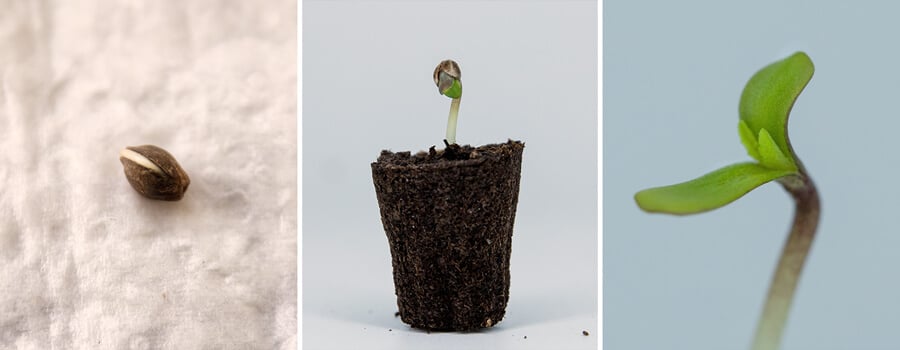
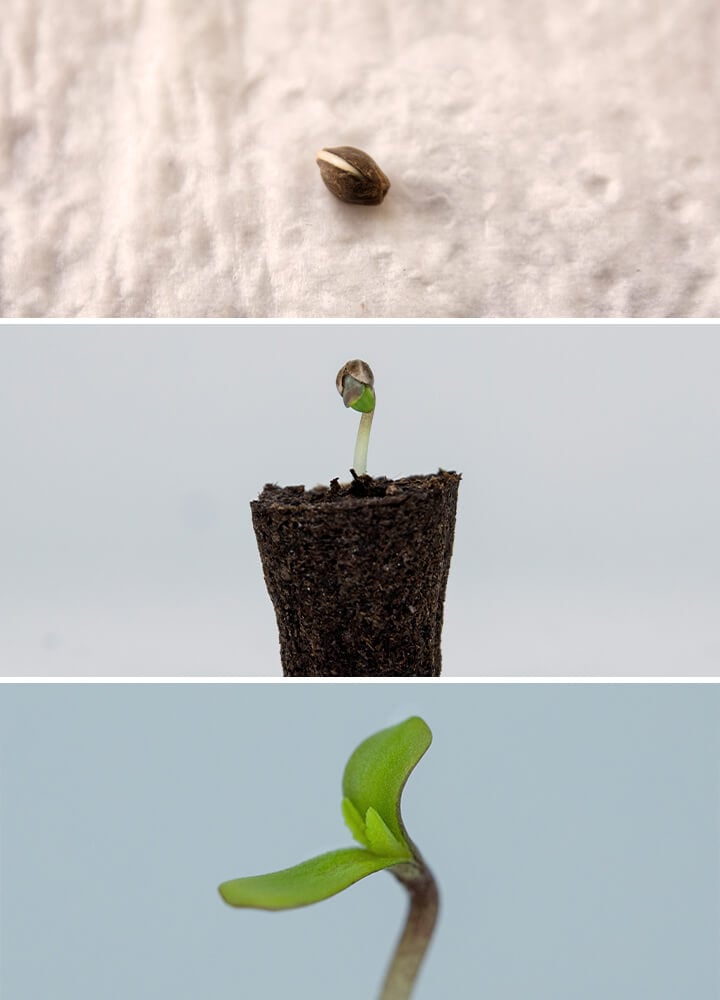
Is It a Good Idea to Grow Marijuana Bag Seeds?
To grow or not to grow bag seeds is a personal decision influenced by your own growing style and goals. That decision, however, is best made while being fully conscious of what bag seeds are and how they differ from properly bred seed stock. Remember:
- Bag seeds may not germinate. Seeds bought from a breeder, however, guarantee high germination rates.
- It's impossible to trace where bag seeds came from, so they may produce plants with very random traits. Breeders, on the other hand, can confirm the lineage of their strains and give you a good idea of what kinds of plants you'll be growing. This makes it a lot easier to source plants that suit your growing style and setup.
- There's a good chance that your bag seeds will produce male or hermaphrodite plants. Feminised seeds, on the other hand, have a 99% chance of becoming female plants, guaranteeing a viable harvest.
In our experience, seasoned growers working with elaborate and costly setups tend to stay away from bag seeds unless they are really tempted by the idea of finding a unique pheno. Unfortunately, the risk of growing males, hermies, or females that simply aren't that good often isn't worth it for growers working with expensive equipment.
Instead, bag seeds are a fun experiment for hobby growers who tend to grow just a few plants at a time in a simple indoor tent or outdoors.
These growers typically don't have high overhead costs and can therefore afford to take a gamble on mediocre seeds. Keep in mind that nothing is certain when growing bag seeds, so the best you can do is go into the experiment lightheartedly and with few expectations. If you're serious about securing a top-shelf harvest every time, stick to strains by expert breeders, or better yet, choose F1 hybrids that produce guaranteed results.





























